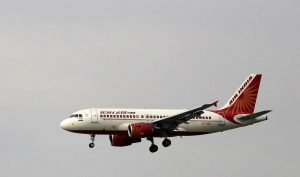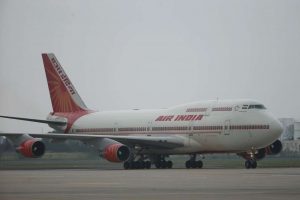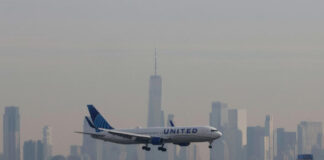SEPTEMBER 17, 2018

NEW DELHI – “We’re really, you know, stuck and there’s no fuel,” a terse message from Captain Rustom Palia, commanding an Air India Boeing 777-300 to Air Traffic Control in New York.
There were 370 passengers on board AI-101, Air India’s flagship flight, which tried, and failed to land at New York’s John F Kennedy International airport on September 11 in deteriorating weather conditions. They had been flying for more than 15 hours on the non-stop service from New Delhi, among the longest flights in the world.
This was a pilot’s worst nightmare during the most critical phase of its flight – its landing.
“Basically, we’ve got a single source radio altimeter, we have a Terrain Collision and Avoidance System failure”, radioed in the Commander of the Air India 777-300 to Air Traffic Control in New York. “No Auto-land, no windshear systems, (no) Auto Speed Brake and the Auxillary Power Unit is unserviceable as well,” he added.
And that was not all. All three Instrument Landing System (ILS) receivers on board the jet malfunctioned. ILS is the key system that helps pilots align the jet with the runway during landing in any weather condition, day and night.
“This Instrument Landing System is unpredictable”, the pilot told Air Traffic Control (ATC) “because every time we turn towards the localiser, it is just gone.”
“Your Instrument Landing System is out of service on both sides of the aircraft, right?” asked Air Traffic Control.
“Yea, that’s correct,” the pilot responded.
“And you said your radio altimeters are out on both sides of the airplane?” the ATC asked.
“Uh, that right, we are on a single radio altimeter now,” the pilot said.
 The plane of Air India carrying Indian Prime Minister Narendra Modi arrives at Qingdao Liuting International Airport for the 18th Shanghai Cooperation Organization (SCO) Summit in Qingdao city, Shandong province, China June 9, 2018. Wu Hong/Pool via REUTERS
The plane of Air India carrying Indian Prime Minister Narendra Modi arrives at Qingdao Liuting International Airport for the 18th Shanghai Cooperation Organization (SCO) Summit in Qingdao city, Shandong province, China June 9, 2018. Wu Hong/Pool via REUTERS
In simple terms, the pilots of the nine-year-old Boeing 777-300, among the most sophisticated airliners ever designed, would need to manually land the massive jet without the aid of a host of systems designed to help the process.
With dangerously low fuel on board and extremely cloudy conditions over large parts of the New York state area, they would need to keep descending in the approximate direction of the runway without knowing its precise location. With the cloud base at just 400 feet, the pilots would need to fly even lower to be able to spot the runway.
“Okay, Air India, just when you get the chance, give me the people on board and the fuel on board please,” the ATC said.
“We have a total of 370 (souls) on board’ and fuel is 7200 kg, Air India-101”, replied one of the pilots to the ATC.
In the end, after being unable to land at JFK International Airport after confronting a series of instrument failures, the pilots of AI-101 were able to land at its designated alternate airport, Newark. By then, the Commander of AI-101 had made up his mind. There was not enough fuel to risk flying to Albany, Boston or Bradley International Airport at Connecticut and he would take the chance “shooting an approach” into Newark despite the marginal weather conditions.
Without the availability of his Instrument Landing Systems, the crew decided to attempt a “non-precision” approach by using the few functional navigation aids on board. This meant using the jet’s Vertical and Lateral Navigation systems to simulate an Instrument Landing Approach into Newark. This was an out-of-the-box approach, something Air India does not train its pilots in. Boeing, the manufacturer of the jet, does not mention use of this technique either in its operational guidelines for the 777 aircraft.
Moments before touchdown, the tower at Newark Airport sounded out an alert and said AI-101 was flying too late on its approach. 90 seconds later, the big jet was on the ground, approximately 38 minutes after the in-cockpit crisis first occurred.
Air India has refused comment on the incident pending an investigation. Audio of the conversation between the crew of AI-101 and Air Traffic Control was released by liveatc.net.
Courtesy/Source: NDTV










































































































